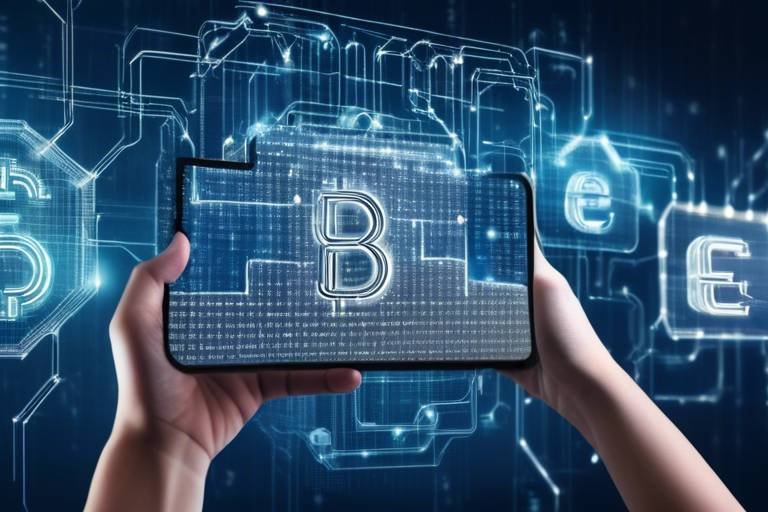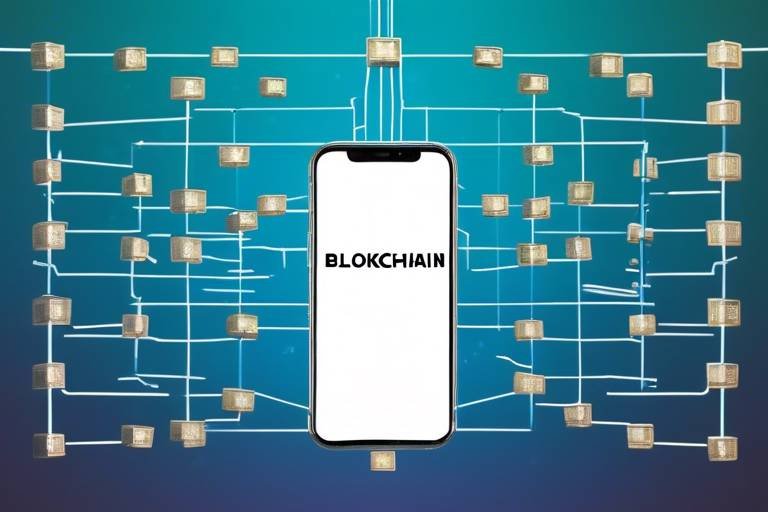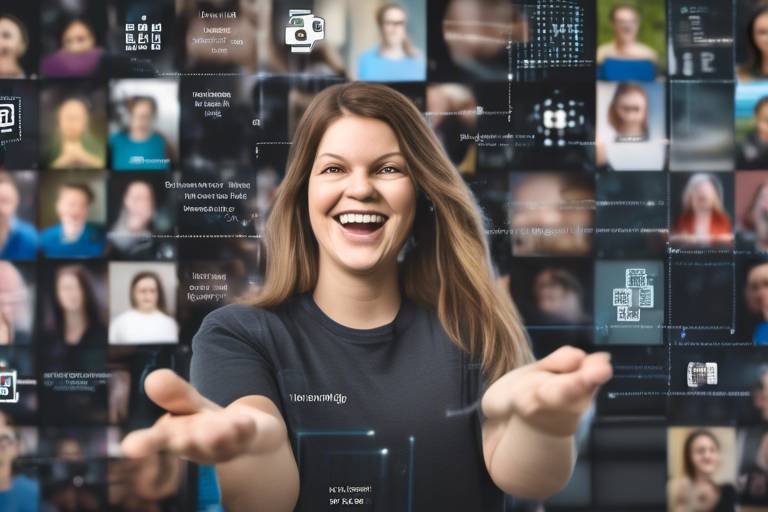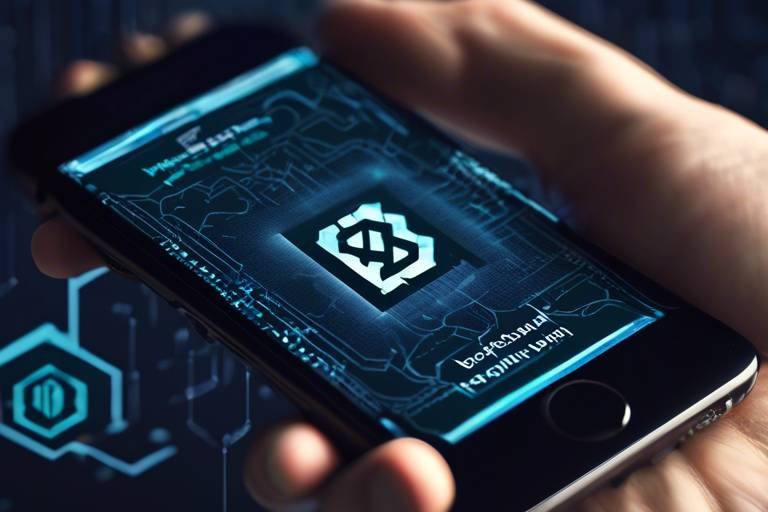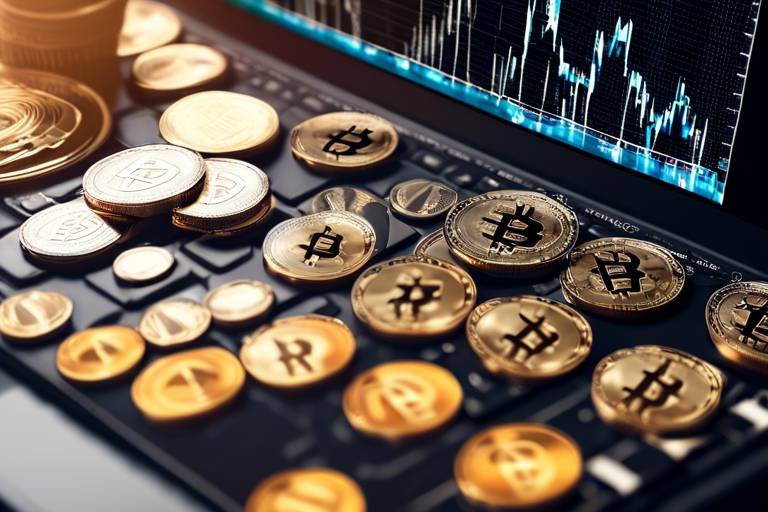Exploring the Intersection of AI and Blockchain Technologies
The world is witnessing a **technological renaissance** as two of the most groundbreaking technologies—artificial intelligence (AI) and blockchain—begin to converge. Imagine a realm where machines not only learn and adapt but also operate with the utmost transparency and security. This intersection is not just a buzzword; it's a **transformative force** poised to reshape industries, enhance productivity, and redefine the way we interact with technology. The combination of AI's cognitive capabilities with the decentralized and secure nature of blockchain creates a **synergistic relationship** that enhances both technologies in ways we are just beginning to understand.
At its core, artificial intelligence refers to the simulation of human intelligence in machines, enabling them to perform tasks that typically require human intelligence, such as understanding language, recognizing patterns, and making decisions. On the other hand, blockchain is a **distributed ledger technology** that provides a secure, transparent way to record transactions across many computers, ensuring that the data is immutable and trustable. When these two technologies come together, they unlock new possibilities that can lead to **innovative solutions** across various sectors.
For instance, in finance, the integration of AI and blockchain can lead to **enhanced security** and **efficiency** in transactions. Smart contracts, which are self-executing contracts with the terms of the agreement directly written into code, can be optimized by AI to predict outcomes and automate processes. This not only speeds up transactions but also reduces the need for intermediaries, making financial systems more accessible to everyone.
In the healthcare sector, the implications are equally profound. With AI analyzing vast amounts of patient data stored securely on a blockchain, healthcare providers can offer more personalized treatment options. Furthermore, the ability to trace pharmaceuticals through a blockchain ensures that patients receive genuine medications, significantly reducing the threat of counterfeit drugs.
However, as we explore this exciting intersection, we must also navigate the **challenges** and **ethical considerations** that arise. Issues of data privacy, algorithmic bias, and the implications of AI decision-making on blockchain networks require careful consideration. How do we ensure that these technologies are used responsibly and ethically? This ongoing dialogue is crucial as we move forward into a future where AI and blockchain coexist and evolve together.
In summary, the intersection of AI and blockchain technologies represents a **new frontier** in technological advancement. By harnessing the strengths of both, we can create systems that are not only more efficient but also more secure and equitable. As we continue to explore this fascinating convergence, the possibilities seem endless, and the potential for innovation is truly **limitless**.
- What are the main benefits of integrating AI with blockchain?
The integration enhances security, improves efficiency, and increases transparency in various applications, from finance to healthcare.
- How do smart contracts work with AI?
Smart contracts are self-executing agreements that can be optimized by AI to predict outcomes and automate processes, improving their efficiency.
- What are the challenges of using AI and blockchain together?
Key challenges include data privacy issues, algorithmic bias, and the ethical implications of AI decisions.
- How can AI improve healthcare through blockchain?
AI can analyze patient data securely stored on a blockchain to provide personalized treatment recommendations and enhance drug traceability.

Understanding AI and Blockchain
Artificial Intelligence (AI) and Blockchain are two of the most transformative technologies of our time, each powerful in its own right, but when combined, they create a synergistic effect that can revolutionize various industries. AI refers to the simulation of human intelligence processes by machines, particularly computer systems. These processes include learning, reasoning, and self-correction. Imagine teaching a computer not just to follow instructions but to learn from experiences and improve over time—this is the essence of AI.
On the other hand, Blockchain is a decentralized digital ledger technology that records transactions across many computers so that the registered transactions cannot be altered retroactively. This ensures transparency and security, as every change is visible to all participants in the network. Think of it as a digital notebook that everyone can see but no one can erase or alter. Each block in the chain contains a number of transactions, and once a block is filled, it’s added to the chain in a linear, chronological order.
The intersection of these two technologies opens up a world of possibilities. For instance, AI can enhance the efficiency and functionality of blockchain networks by automating complex processes and analyzing large volumes of data. Conversely, blockchain can provide AI with a secure and transparent framework for data sharing, which is crucial for training AI models effectively. This relationship can lead to innovations that improve decision-making processes, enhance security measures, and foster trust among users.
To understand how these technologies complement each other, let’s consider a few key areas:
- Data Integrity: Blockchain ensures that the data fed into AI systems is accurate and tamper-proof, which is essential for generating reliable outcomes.
- Decentralization: AI models can be decentralized on blockchain networks, allowing for collaborative learning without compromising data privacy.
- Enhanced Security: AI can monitor blockchain transactions in real-time, identifying anomalies and potential security threats more effectively.
In summary, the combination of AI and Blockchain is not just a technological trend; it’s a paradigm shift that promises to enhance efficiency, security, and transparency across various sectors. As we continue to explore these technologies, the potential applications are virtually limitless, ranging from finance to healthcare and beyond.

Applications in Finance
The integration of artificial intelligence (AI) and blockchain technology is nothing short of revolutionary, particularly in the financial sector. Imagine a world where your transactions are not only secure but also incredibly efficient and transparent. That's the promise of combining these two powerful technologies. With AI's ability to analyze vast amounts of data in real-time and blockchain's secure, decentralized ledger, financial institutions are poised to enhance their operations significantly. This synergy is transforming how we think about money, investments, and transactions.
One of the most exciting applications of AI and blockchain in finance is the development of smart contracts. These are self-executing contracts with the terms of the agreement directly written into code. By leveraging AI, these contracts can be optimized to predict outcomes and automate processes, making them not only more efficient but also smarter. For instance, an AI-enhanced smart contract could automatically adjust terms based on real-time market data, ensuring that all parties receive the most favorable terms without the need for intermediaries.
Smart contracts are changing the game by reducing the need for traditional legal frameworks, which can be slow and costly. With AI's predictive capabilities, these contracts can also manage risks more effectively. For example, if a certain condition is met, such as a price drop in a commodity, the smart contract can execute a trade automatically, minimizing losses for investors. This automation not only saves time but also significantly reduces the potential for human error.
Another critical area where AI and blockchain are making waves is in fraud detection. Financial institutions are constantly battling fraud, with criminals becoming increasingly sophisticated. AI algorithms can analyze transaction patterns on blockchain networks to identify anomalies that may indicate fraudulent activities. For instance, if a transaction deviates significantly from a user's typical spending habits, AI can flag it for further investigation. This proactive approach increases trust and reliability in financial systems, allowing consumers and businesses to transact with confidence.
The combination of AI and blockchain also enhances risk assessment in lending and investment. Traditionally, assessing risk has been a labor-intensive process involving numerous data points and subjective judgments. However, AI can analyze vast datasets at lightning speed, identifying potential defaults or market shifts with remarkable accuracy. By integrating this analysis with blockchain’s transparent and immutable records, financial institutions can make more informed decisions, ultimately leading to better outcomes for both lenders and borrowers.
Moreover, the emergence of decentralized AI models built on blockchain technology is a game-changer. These models enhance data privacy and security, allowing for collaborative machine learning without compromising sensitive information. For example, multiple financial institutions can share insights and data while maintaining control over their proprietary information. This decentralized approach can lead to more robust AI models that benefit from a diverse range of inputs, ultimately improving decision-making processes across the board.
In summary, the applications of AI and blockchain in finance are vast and varied, offering enhanced security, efficiency, and transparency. As these technologies continue to evolve, we can expect to see even more innovative solutions that will reshape the financial landscape. The future looks bright for those willing to embrace this technological convergence!
- What are smart contracts? Smart contracts are self-executing contracts with the terms of the agreement directly written into code, allowing for automated and efficient transactions.
- How does AI enhance fraud detection? AI analyzes transaction patterns on blockchain networks to identify anomalies, helping to prevent fraudulent activities.
- What role does blockchain play in risk assessment? Blockchain provides a transparent and immutable record of transactions, while AI analyzes large datasets to predict potential risks.
- Can decentralized AI models improve data privacy? Yes, decentralized AI models allow for collaborative machine learning without compromising sensitive information, enhancing data privacy.

Smart Contracts
The concept of is one of the most exciting innovations to emerge from the blockchain revolution. Imagine a world where contracts are not just pieces of paper but self-executing agreements that automatically enforce the terms written into their code. This is precisely what smart contracts offer. They operate on blockchain technology, providing a secure and decentralized way to facilitate, verify, and enforce agreements without the need for intermediaries. But how do they work, and what makes them so revolutionary?
At their core, smart contracts are programmed to execute actions when predefined conditions are met. For instance, consider a simple scenario in real estate: if Alice wants to buy a house from Bob, a smart contract can be created that stipulates that once Alice deposits the agreed amount into the contract, ownership of the house automatically transfers to her. This eliminates the need for a lengthy escrow process and reduces the risk of fraud or miscommunication.
The integration of artificial intelligence (AI) with smart contracts can further enhance their functionality. AI algorithms can analyze vast amounts of data to predict outcomes, which allows for more intelligent decision-making within the contract's execution. For example, if a smart contract is used in an insurance claim, AI can assess the validity of the claim based on historical data and current circumstances, ensuring that payouts are made only when justified. This not only makes the process more efficient but also reduces the potential for disputes.
Here are some key benefits of using smart contracts, especially when combined with AI:
- Efficiency: Smart contracts streamline processes by eliminating intermediaries and automating tasks.
- Transparency: All parties involved can view the contract terms and its execution, fostering trust.
- Cost Reduction: By minimizing the need for middlemen, costs associated with contract execution are significantly lowered.
- Accuracy: Automated execution reduces the chances of human error, ensuring that contracts are fulfilled accurately.
However, it's essential to consider the challenges that come with smart contracts. They are only as good as the code they are written in; if there are bugs or vulnerabilities, the entire contract could be compromised. Moreover, the legal status of smart contracts is still a gray area in many jurisdictions, which raises questions about enforceability and accountability.
In summary, smart contracts represent a leap forward in how we think about agreements and transactions. By leveraging the power of blockchain and AI, they offer a glimpse into a future where trust is built into the very fabric of our digital interactions. As we continue to explore this intersection of technologies, the potential applications are boundless, from real estate to supply chain management and beyond.
- What is a smart contract? A smart contract is a self-executing contract with the terms of the agreement directly written into code.
- How do smart contracts work? They automatically execute actions when predefined conditions are met, without the need for intermediaries.
- What are the benefits of smart contracts? They offer efficiency, transparency, cost reduction, and accuracy in contract execution.
- Are smart contracts legally binding? The legal status of smart contracts varies by jurisdiction and is still being defined.

Fraud Detection
Fraud detection in financial systems has always been a daunting challenge, but the integration of artificial intelligence (AI) with blockchain technology is changing the game dramatically. Imagine a world where every transaction is not only recorded but also analyzed in real-time to spot irregularities and potential fraud. Sounds like something out of a sci-fi movie, right? Well, it’s becoming a reality!
At its core, AI can analyze vast amounts of transaction data on blockchain networks, identifying patterns that might indicate fraudulent activities. This capability is akin to having a highly skilled detective who never sleeps, tirelessly sifting through mountains of data to catch the bad guys. With AI algorithms constantly learning and adapting, they become more adept at spotting anomalies over time, which significantly enhances the trustworthiness of financial systems.
Here’s how it works: when a transaction occurs on a blockchain, it is not just a simple entry; it is a part of a larger tapestry of data. AI can monitor this tapestry, looking for threads that seem out of place. For example, if a user suddenly initiates a transaction that is significantly larger than their usual activity, the AI can flag this for further investigation. This proactive approach means that potential fraud can be caught before it escalates, saving institutions and individuals from significant financial losses.
Moreover, the decentralized nature of blockchain adds an extra layer of security. Since every transaction is recorded across multiple nodes, it becomes nearly impossible for a fraudster to manipulate the data without being detected. This transparency, combined with AI's analytical prowess, creates a powerful defense mechanism against fraud.
However, it's essential to recognize that while AI and blockchain significantly enhance fraud detection, they are not foolproof. Cybercriminals are continually evolving their tactics, which means that the systems in place must also adapt. Continuous updates and improvements in AI algorithms are necessary to keep pace with new methods of fraud. This dynamic interplay between fraudsters and defenders makes the field of fraud detection an exciting and challenging arena.
In summary, the fusion of AI and blockchain technology is revolutionizing fraud detection in the financial sector. By leveraging AI's ability to analyze vast datasets and the immutable nature of blockchain, institutions can create a robust defense against fraudulent activities. As we move forward, the ongoing collaboration between these technologies will undoubtedly lead to even more innovative solutions, making our financial systems safer and more reliable.
- How does AI improve fraud detection?
AI analyzes transaction patterns and identifies anomalies that may indicate fraudulent activities, allowing for timely intervention.
- What role does blockchain play in fraud detection?
Blockchain provides a transparent and immutable record of transactions, making it difficult for fraudsters to alter data without detection.
- Can AI algorithms learn from past fraud cases?
Yes, AI algorithms can be trained on historical data to improve their ability to detect similar patterns in future transactions.
- What are the limitations of using AI in fraud detection?
AI systems may struggle with new types of fraud that they have not been trained on, requiring continuous updates and learning.

Risk Assessment
When it comes to lending and investment, understanding risk is like navigating through a maze; one wrong turn can lead to significant losses. This is where the powerful combination of artificial intelligence (AI) and blockchain technology comes into play. By merging these two innovative technologies, we can create a more accurate and reliable framework for assessing risks in real-time. Imagine having a crystal ball that not only predicts market shifts but also evaluates the creditworthiness of borrowers based on a multitude of factors. That's the promise of AI-driven risk assessment on a blockchain.
At its core, AI excels at processing vast amounts of data quickly and efficiently. When integrated with blockchain, which provides a secure and immutable record of transactions, the capabilities of AI expand exponentially. For instance, AI algorithms can analyze historical transaction data, market trends, and even social media sentiment to create a comprehensive risk profile. This allows financial institutions to make informed decisions based on real-time insights rather than relying solely on outdated models.
Moreover, the decentralized nature of blockchain enhances the reliability of the data being analyzed. Since blockchain records are tamper-proof, AI can trust the information it processes, leading to more accurate predictions. This synergy not only improves the assessment of risks but also fosters greater trust among stakeholders. Imagine a lender being able to assess a borrower's risk profile with confidence, knowing that the data is accurate and secure.
However, it's essential to recognize that this integration is not without its challenges. There are several critical factors to consider when leveraging AI and blockchain for risk assessment:
- Data Quality: The effectiveness of AI algorithms is heavily dependent on the quality of the data fed into them. If the blockchain data is inaccurate or incomplete, the risk assessments will be flawed.
- Regulatory Compliance: As financial institutions adopt these technologies, they must navigate the complex landscape of regulations to ensure compliance while innovating.
- Ethical Considerations: It's crucial to ensure that AI does not perpetuate biases in risk assessment, which could lead to unfair lending practices.
In conclusion, the combination of AI and blockchain presents a revolutionary approach to risk assessment in finance. By harnessing the strengths of both technologies, we can create systems that are not only more accurate but also more transparent and trustworthy. As we move forward, it's exciting to think about how these innovations will reshape the landscape of lending and investment, ultimately leading to a more secure financial ecosystem.
- How does AI improve risk assessment in finance? AI analyzes large datasets to identify patterns and predict potential defaults, enhancing the accuracy of risk evaluations.
- What role does blockchain play in risk assessment? Blockchain provides a secure and immutable record of transactions, ensuring the reliability of the data used in AI algorithms.
- Are there risks associated with using AI and blockchain together? Yes, challenges such as data quality, regulatory compliance, and ethical considerations must be addressed to maximize the benefits.
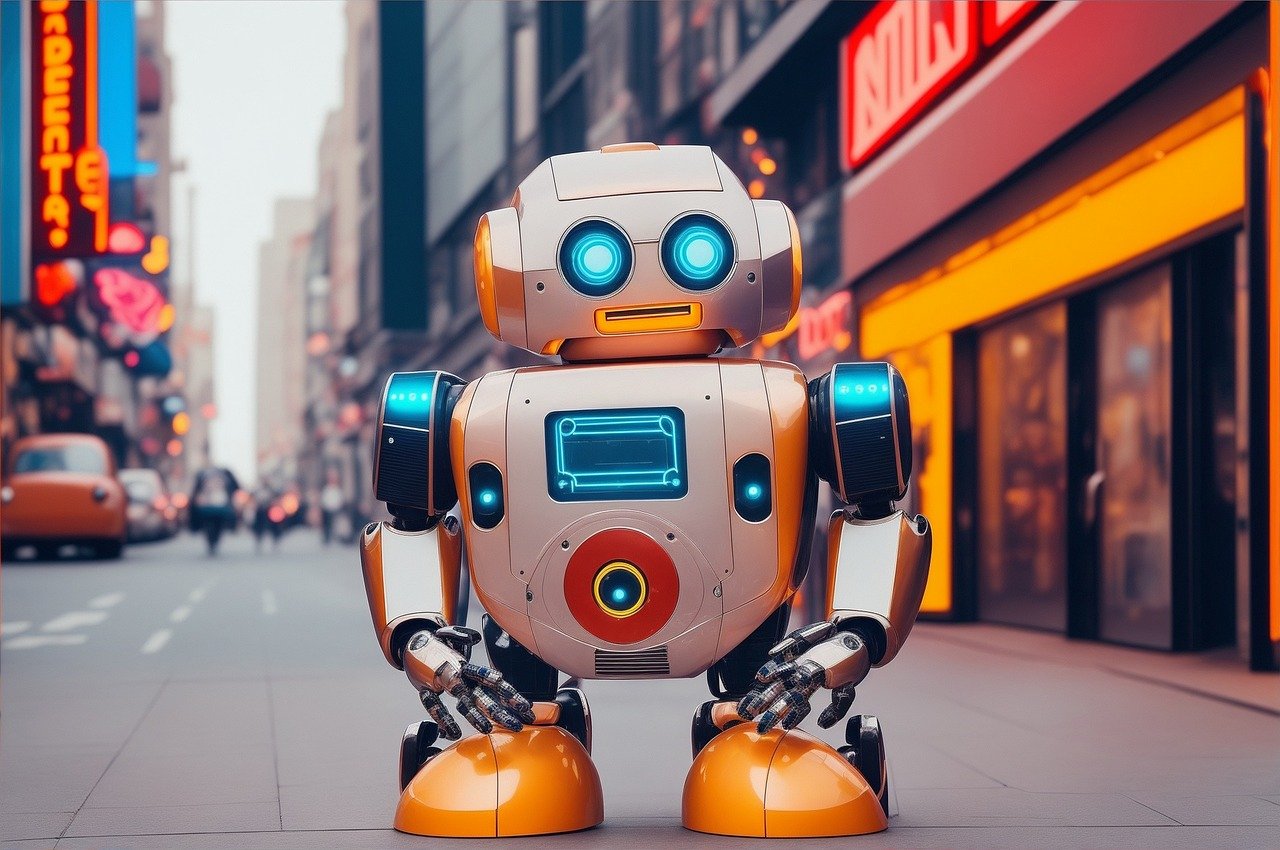
Decentralized AI Models
The concept of is a game-changer in the tech landscape, merging the power of artificial intelligence with the security of blockchain technology. Imagine a world where AI systems can learn and evolve without centralized control, allowing for a more democratic and inclusive approach to machine learning. This is not just a dream; it's becoming a reality with decentralized AI, where data ownership and privacy are prioritized.
At its core, decentralized AI leverages blockchain's inherent characteristics—transparency, security, and immutability. By distributing AI models across a network of nodes, we can ensure that no single entity has control over the entire system. This decentralization fosters collaboration among users, enabling them to contribute data and computational power while retaining ownership of their information. The benefits of this approach are manifold:
- Enhanced Data Privacy: Users can share their data without relinquishing control, as blockchain allows for secure and encrypted data transactions.
- Collaborative Learning: Multiple parties can train AI models collectively, improving the model's accuracy and robustness without exposing individual data.
- Reduced Bias: By incorporating diverse datasets from various sources, decentralized AI can help mitigate biases that often plague traditional AI systems.
Moreover, decentralized AI models can operate in a peer-to-peer manner, meaning that they can function independently without relying on a central server. This not only improves the system's resilience but also enhances its scalability. For instance, in industries like healthcare, decentralized AI can analyze patient data from multiple sources while ensuring compliance with privacy regulations, ultimately leading to better patient outcomes.
However, as with any emerging technology, challenges remain. The integration of AI and blockchain raises questions about governance, data integrity, and the ethical implications of AI decisions. To address these concerns, it is vital to establish clear protocols and standards for decentralized AI systems. This will ensure that they operate transparently and fairly, safeguarding users' rights while harnessing the transformative power of these technologies.
In summary, decentralized AI models represent a promising frontier where innovation meets ethical responsibility. By combining the strengths of AI and blockchain, we can create systems that not only enhance performance but also prioritize user privacy and data security. The future of AI is not just about algorithms; it's about building a community where everyone has a stake in the technology that shapes their lives.
- What are decentralized AI models? Decentralized AI models are machine learning systems that operate on a distributed network, utilizing blockchain technology to enhance data security and privacy.
- How do decentralized AI models ensure data privacy? By allowing users to maintain control over their data and utilizing encryption, decentralized AI models protect sensitive information from unauthorized access.
- What are the benefits of decentralized AI? Benefits include enhanced data privacy, collaborative learning, and reduced biases in AI algorithms, leading to more accurate and fair outcomes.
- What challenges do decentralized AI models face? Challenges include governance, data integrity, and ethical implications of AI decisions, which need to be addressed through clear protocols and standards.

Healthcare Innovations
The intersection of artificial intelligence (AI) and blockchain technology is creating a seismic shift in the healthcare industry. Imagine a world where patient data is not only secure but also easily accessible to authorized personnel, allowing for personalized treatment and quicker diagnoses. This is not just a dream; it's becoming a reality. By leveraging the unique strengths of both technologies, we can enhance patient care and improve operational efficiency in ways we never thought possible.
One of the most exciting aspects of this integration is the improvement in patient data management. Traditionally, patient records have been fragmented across various healthcare systems, leading to inefficiencies and potential errors. However, with blockchain, patient data can be stored in a decentralized manner, ensuring that it is both secure and easily retrievable. AI plays a crucial role here as well, allowing for sophisticated data analysis that can uncover patterns and insights. For example, AI algorithms can analyze a patient's historical data to predict future health issues, enabling proactive care.
Additionally, the integration of AI and blockchain is revolutionizing drug supply chain management. The pharmaceutical industry has long struggled with issues of counterfeit drugs, which pose serious risks to patient safety. By using blockchain to track the journey of drugs from manufacture to delivery, healthcare providers can ensure authenticity. AI can enhance this process further by analyzing supply chain data to predict potential disruptions or inefficiencies. Together, these technologies can create a transparent and reliable drug supply chain that prioritizes patient safety.
Moreover, the combination of AI and blockchain facilitates predictive analytics in healthcare. For instance, AI can analyze vast amounts of patient data to identify trends and predict outcomes, while blockchain ensures that this data remains secure and tamper-proof. This synergy can lead to better decision-making in clinical environments, allowing healthcare professionals to tailor treatments to individual patients based on real-time data.
In conclusion, the fusion of AI and blockchain in healthcare is not just about technology; it's about improving lives. As these innovations continue to evolve, we can expect to see significant advancements in patient care, data security, and operational efficiency. The future of healthcare is bright, and it’s being shaped by the powerful combination of these two transformative technologies.
- What is the role of AI in healthcare?
AI helps in analyzing patient data, predicting health outcomes, and personalizing treatment plans. - How does blockchain improve patient data security?
Blockchain provides a decentralized and tamper-proof system for storing patient records, ensuring data integrity. - Can AI help in drug supply chain management?
Yes, AI can analyze supply chain data to predict disruptions and enhance the traceability of pharmaceuticals. - What are the ethical concerns regarding AI in healthcare?
Ethical concerns include data privacy, bias in AI algorithms, and the implications of AI-driven decisions on patient care.

Patient Data Security
In today's digital age, where information flows like water, ensuring has become a vital concern for healthcare providers, patients, and regulators alike. Imagine a world where your personal health information is as secure as a vault, yet accessible when you need it. This is the promise that the integration of artificial intelligence (AI) and blockchain technology brings to the table. By leveraging the strengths of both technologies, we can create a robust framework that not only protects sensitive patient data but also enhances the quality of care.
At its core, blockchain technology offers a decentralized and immutable ledger, which means once data is recorded, it cannot be altered or deleted without consensus. This is crucial in healthcare, where data integrity is paramount. When combined with AI, which excels at analyzing vast amounts of data, we can derive insights that inform treatment decisions while keeping patient information secure. For instance, AI can sift through encrypted patient records to identify trends or predict outcomes without ever exposing the raw data.
Moreover, the implementation of smart contracts on the blockchain can automate and enforce data-sharing agreements between healthcare providers. These contracts can stipulate who has access to what data, under what conditions, and for how long. This not only enhances security but also ensures compliance with regulations such as the Health Insurance Portability and Accountability Act (HIPAA) in the United States, which mandates strict guidelines for patient data privacy.
However, the journey towards achieving optimal patient data security is not without its challenges. One major concern is the potential for data breaches, which can occur if adequate security measures are not in place. While blockchain offers a high level of security, it is still vulnerable to certain attacks, such as 51% attacks, where a single entity gains control over the majority of the network, potentially compromising data integrity. Therefore, healthcare organizations must implement layered security protocols, including encryption, access controls, and regular audits, to safeguard against such threats.
Another critical aspect is the need for interoperability among different healthcare systems. For AI and blockchain solutions to be effective, they must seamlessly communicate with existing healthcare infrastructures. This requires collaboration among various stakeholders, including technology providers, healthcare professionals, and regulatory bodies, to establish standards that facilitate data exchange while maintaining security and privacy.
In conclusion, the integration of AI and blockchain in patient data security represents a revolutionary shift in how healthcare organizations manage sensitive information. By harnessing the power of these technologies, we can create a secure, efficient, and patient-centered approach to healthcare data management. As we move forward, it is essential to remain vigilant and proactive in addressing the challenges that arise, ensuring that patient trust is upheld in this rapidly evolving landscape.
- What is the role of blockchain in patient data security?
Blockchain provides a decentralized and immutable ledger for storing patient data, ensuring that once information is recorded, it cannot be altered or deleted without consensus. - How does AI contribute to patient data security?
AI analyzes encrypted patient data to derive insights without exposing sensitive information, enhancing the quality of care while maintaining privacy. - What are smart contracts, and how do they enhance security?
Smart contracts automate and enforce data-sharing agreements, stipulating access conditions to ensure compliance with regulations like HIPAA. - What challenges exist in implementing AI and blockchain for patient data security?
Challenges include potential data breaches, the need for interoperability among healthcare systems, and the requirement for layered security protocols.
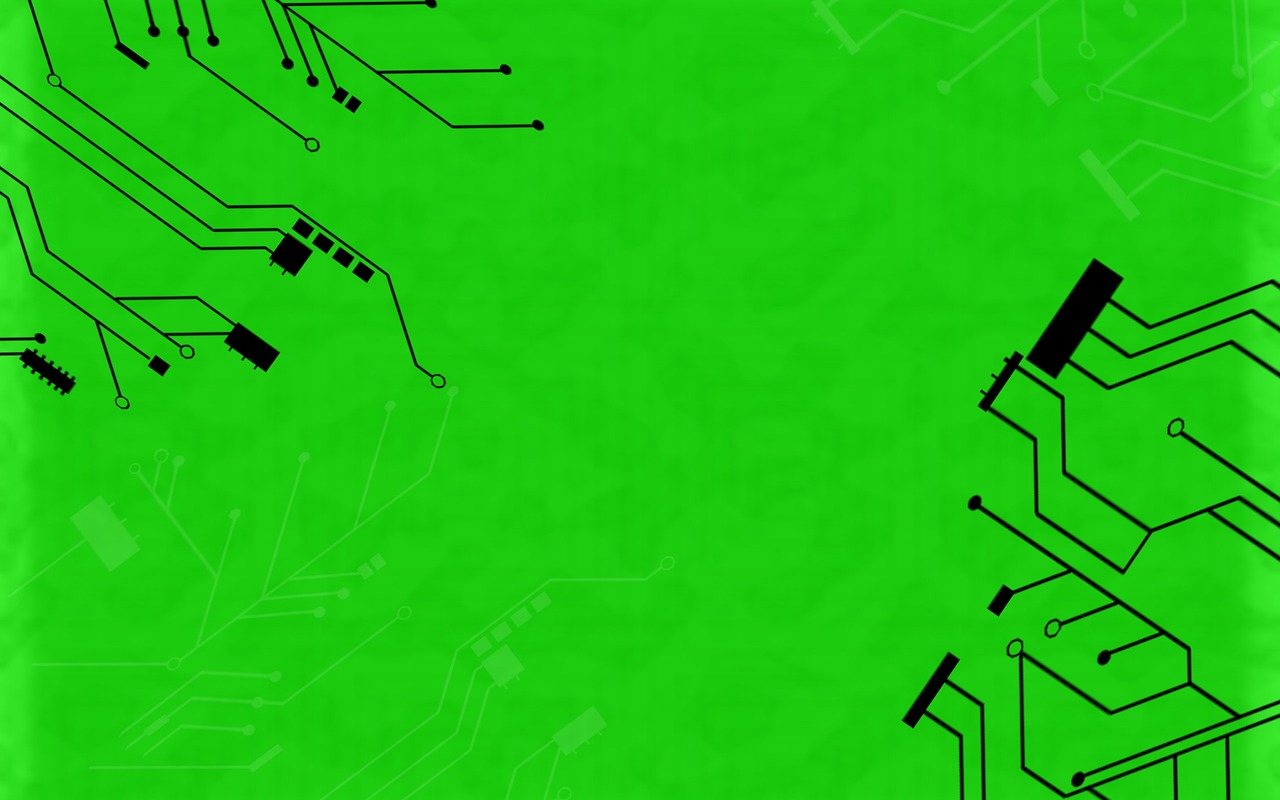
Drug Supply Chain Management
The integration of AI and blockchain in drug supply chain management is nothing short of revolutionary. Imagine a world where every pill, syringe, and vial can be traced back to its origin, ensuring that patients receive only the safest and most effective medications. With blockchain's immutable ledger combined with AI's analytical prowess, we can create a system that not only tracks the journey of pharmaceuticals but also enhances the overall efficiency and safety of the supply chain.
At its core, blockchain technology provides a decentralized and transparent platform for recording every transaction associated with a drug's journey from manufacturer to patient. Each transaction is time-stamped and securely stored, making it nearly impossible to alter or counterfeit information. This is crucial in an industry plagued by counterfeit drugs, which pose serious risks to patient safety and trust in healthcare systems.
AI steps in to enhance this process by analyzing vast amounts of data generated throughout the supply chain. For instance, AI algorithms can predict demand fluctuations, optimize inventory levels, and even identify potential bottlenecks before they become problematic. By leveraging machine learning, stakeholders can make informed decisions that improve the flow of goods and minimize waste.
Furthermore, the combination of AI and blockchain facilitates real-time monitoring of drug shipments. This means that if a shipment deviates from its expected route or temperature range, alerts can be generated immediately. Such proactive measures not only protect the integrity of the drugs but also help in adhering to stringent regulatory standards.
To illustrate the benefits further, consider the following table that highlights key advantages of integrating AI with blockchain in drug supply chain management:
| Advantage | Description |
|---|---|
| Enhanced Traceability | Every transaction is recorded on a blockchain, ensuring a complete history of the drug's journey. |
| Fraud Prevention | Blockchain's immutable nature reduces the risk of counterfeit drugs entering the supply chain. |
| Data-Driven Decisions | AI analyzes data to optimize inventory and predict demand, improving operational efficiency. |
| Real-Time Monitoring | Immediate alerts for deviations in shipment conditions enhance safety and compliance. |
In summary, the fusion of AI and blockchain in drug supply chain management is paving the way for a safer, more efficient, and transparent healthcare system. As these technologies continue to evolve, we can expect to see even greater innovations that will ultimately benefit patients, healthcare providers, and the pharmaceutical industry as a whole.
- What is the main benefit of using AI in drug supply chain management? AI enhances efficiency by analyzing data to optimize inventory and predict demand.
- How does blockchain prevent counterfeit drugs? Blockchain records every transaction securely, making it difficult to alter or fake the drug's history.
- Can AI help in real-time monitoring of drug shipments? Yes, AI can provide alerts for any deviations in the shipment's expected conditions.
- What are the challenges of integrating AI and blockchain? Challenges include data privacy concerns, the need for regulatory frameworks, and ensuring algorithmic fairness.
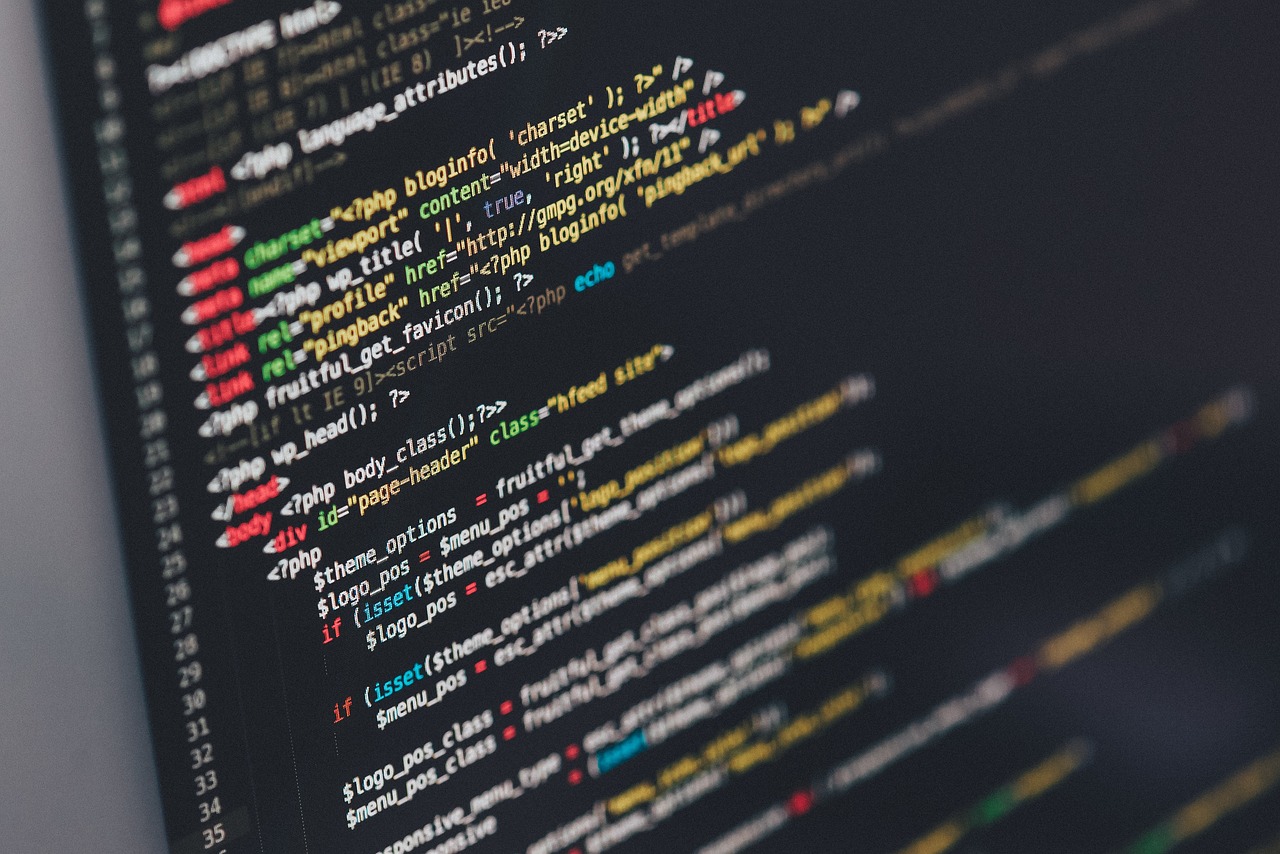
Challenges and Ethical Considerations
As we dive deeper into the integration of artificial intelligence (AI) and blockchain, it becomes increasingly clear that while the potential benefits are immense, there are significant challenges and ethical considerations that we cannot overlook. These technologies are not just tools; they are reshaping entire industries and, consequently, the way we approach privacy, security, and ethical decision-making.
One of the primary challenges is data privacy. With AI analyzing vast amounts of data stored on blockchain networks, the question arises: how do we ensure that personal information is handled responsibly? Blockchain is known for its transparency, but this very characteristic can pose risks to individual privacy. For instance, if sensitive health data is stored on a blockchain, can we truly guarantee that it remains confidential? The balance between transparency and privacy is delicate, and finding a solution is crucial for the widespread adoption of these technologies.
Moreover, there’s the issue of algorithmic bias. AI systems, by their nature, learn from existing data, which can sometimes reflect societal biases. When these biased algorithms are applied to blockchain systems, the implications can be profound. Imagine a lending platform that uses AI to assess creditworthiness but inadvertently discriminates against certain demographics due to biased training data. This not only undermines the fairness of the system but can also perpetuate existing inequalities. Therefore, ensuring that AI decision-making processes are fair, transparent, and free of bias is imperative.
Additionally, the integration of AI and blockchain raises questions about accountability. When an AI system makes a decision based on data from a blockchain, who is responsible for that decision? Is it the developer of the AI, the entity that owns the blockchain, or perhaps the users themselves? This ambiguity can lead to significant ethical dilemmas, especially in critical sectors like finance and healthcare, where the stakes are incredibly high.
To address these challenges, a collaborative approach involving stakeholders from various sectors is essential. Developing comprehensive regulatory frameworks can help govern the use of AI and blockchain technologies. These regulations should focus on:
- Ensuring data privacy and security
- Mitigating algorithmic bias
- Establishing clear accountability measures
By prioritizing these aspects, we can harness the transformative potential of AI and blockchain while also safeguarding ethical standards. The road ahead may be fraught with challenges, but with proactive measures, we can navigate these complexities and pave the way for a more equitable technological landscape.
Q1: What are the main challenges of integrating AI and blockchain?
A1: The main challenges include data privacy issues, algorithmic bias, and accountability concerns. As both technologies evolve, addressing these challenges is crucial for ethical implementation.
Q2: How can we ensure data privacy in AI and blockchain applications?
A2: Implementing robust encryption methods, establishing clear data access policies, and utilizing privacy-preserving techniques can help secure personal information while still benefiting from AI and blockchain.
Q3: What is algorithmic bias, and why is it a concern?
A3: Algorithmic bias refers to the potential for AI systems to perpetuate existing societal biases present in their training data. This is a concern because it can lead to unfair outcomes, especially in sensitive applications like lending or hiring.
Q4: Who is responsible for decisions made by AI in blockchain systems?
A4: Responsibility can be ambiguous and may depend on various factors, including the developers of the AI, the entities managing the blockchain, and the users. Clear accountability frameworks are needed to address this issue.
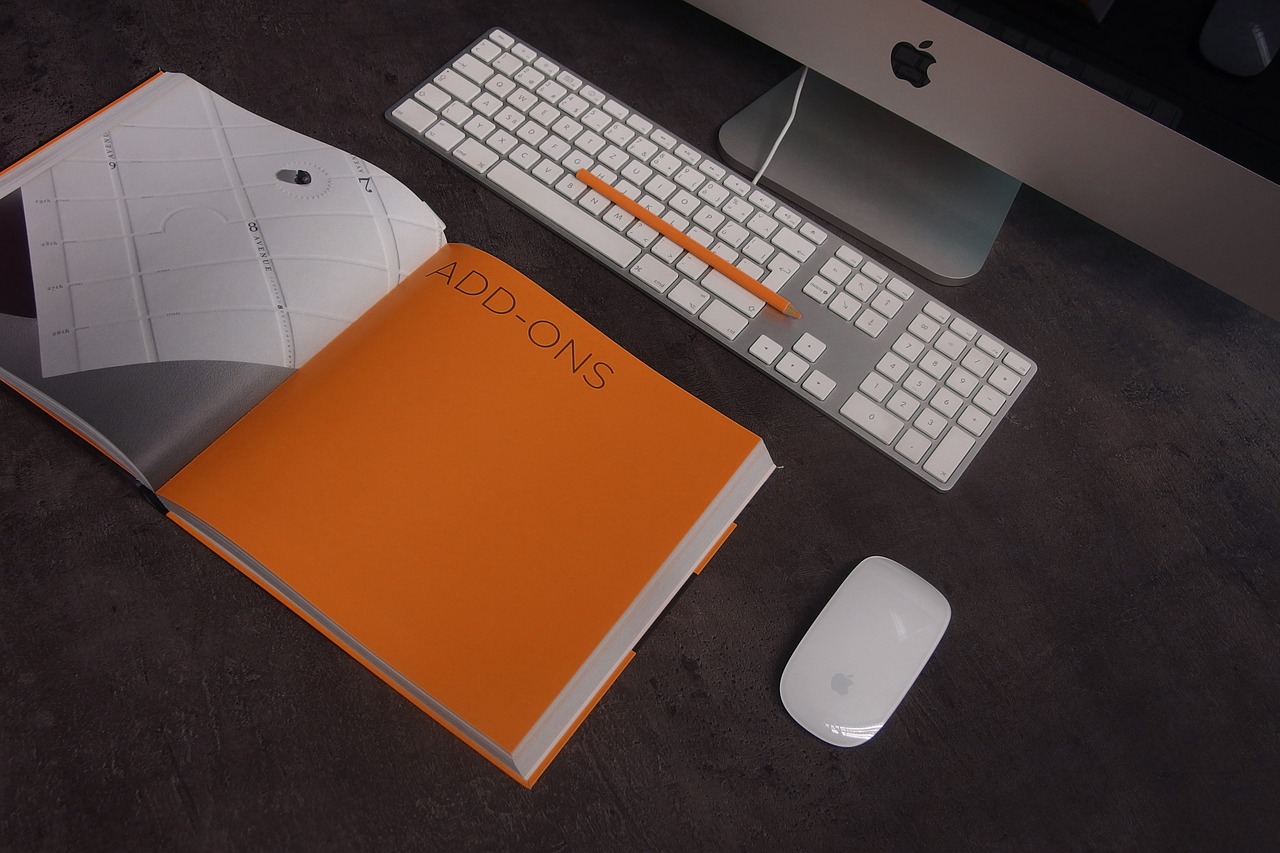
Data Privacy Issues
As we dive into the exciting world where artificial intelligence (AI) meets blockchain, one of the most pressing concerns that arises is data privacy. In a landscape where data is the new oil, the way we handle personal information is paramount. Blockchain technology promises enhanced security through its decentralized nature, but it also raises significant questions about how this data is stored, accessed, and utilized. Imagine a vault that is both secure and transparent; while blockchain offers the vault, AI is the key that can unlock it, but what happens when that key falls into the wrong hands?
One of the major issues is the potential for personal data to be exposed or misused. With AI algorithms analyzing vast amounts of data, there's a risk that sensitive information can be inadvertently revealed. For instance, consider a scenario where a healthcare provider uses AI to predict patient outcomes based on historical data stored on a blockchain. If the AI model is not designed with stringent privacy measures, it might unintentionally disclose identifiable information, violating patient confidentiality.
Furthermore, the challenge of data ownership complicates the privacy landscape. Who truly owns the data on a blockchain? Is it the individual, the organization, or the AI system that analyzes it? This ambiguity can lead to disputes and ethical dilemmas, particularly when it comes to consent. Individuals may not fully understand how their data is being used, which brings us to the importance of transparency in AI algorithms. If users are unaware of how their data is processed, it creates a breeding ground for mistrust.
To tackle these issues, it’s crucial to implement robust data governance frameworks. Here are a few considerations:
- Consent Management: Ensuring that users have clear options regarding how their data is used.
- Data Anonymization: Utilizing techniques to anonymize data before it is analyzed by AI, thus protecting individual identities.
- Regular Audits: Conducting audits to ensure compliance with privacy regulations and to assess the effectiveness of data protection measures.
In summary, while the integration of AI and blockchain holds tremendous potential for innovation, it is imperative to address the data privacy issues that accompany this technological convergence. By prioritizing privacy and implementing ethical practices, we can harness the power of these technologies without compromising individual rights. As we move forward, the challenge will be to strike a balance between leveraging data for insights and safeguarding the privacy of individuals.

Algorithmic Bias
As we dive deeper into the world of artificial intelligence and blockchain, one of the pressing issues that emerges is . This phenomenon occurs when AI systems make decisions that are influenced by prejudiced data or flawed algorithms. Imagine a scale that should weigh equally but is tipped to one side; that’s what happens when biases seep into AI algorithms. These biases can lead to unfair outcomes, especially when these systems are integrated with blockchain technology, which prides itself on transparency and security.
When we consider the implications of algorithmic bias, it becomes clear that the stakes are high. For instance, if an AI model trained on biased data is used to make decisions in a financial context—such as loan approvals or credit scoring—it could unfairly disadvantage certain groups of people. In a world where blockchain is celebrated for its decentralized and immutable nature, introducing biased AI into the mix can create a paradox. The data on the blockchain may be secure, but if the AI interpreting that data is biased, the decisions made can still reflect systemic inequalities.
To illustrate this further, let’s look at a few key areas where algorithmic bias can manifest:
- Recruitment Processes: AI systems designed to streamline hiring can inadvertently favor candidates from certain backgrounds if the training data reflects historical hiring biases.
- Healthcare Decisions: AI tools that assist in diagnosing conditions might underperform for specific demographics if they were trained on non-representative data sets.
- Law Enforcement: Predictive policing algorithms can perpetuate existing biases in law enforcement practices, leading to over-policing in certain communities.
Addressing algorithmic bias is not just a technical challenge; it’s an ethical imperative. Developers and organizations must prioritize fairness and inclusivity in their AI systems. This can involve implementing strategies such as:
- Diverse Data Sets: Ensuring that the data used to train AI models is representative of different demographics to reduce bias.
- Regular Audits: Conducting periodic assessments of AI systems to identify and rectify biases that may have developed over time.
- Transparency in Algorithms: Making the decision-making process of AI systems understandable to users, which can help in identifying potential biases.
In conclusion, while the combination of AI and blockchain holds immense potential for innovation, it’s crucial to remain vigilant about the risks posed by algorithmic bias. By fostering an environment that emphasizes ethical considerations and fairness, we can harness the power of these technologies while minimizing their pitfalls.
- What is algorithmic bias? Algorithmic bias refers to systematic and unfair discrimination that occurs when AI algorithms produce biased results due to flawed data or design.
- How can we mitigate algorithmic bias? Mitigation strategies include using diverse data sets, conducting regular audits, and ensuring algorithm transparency.
- Why is algorithmic bias a concern in AI and blockchain integration? Because biased AI can lead to unfair decisions, even if the data on the blockchain is secure and transparent, creating ethical dilemmas.
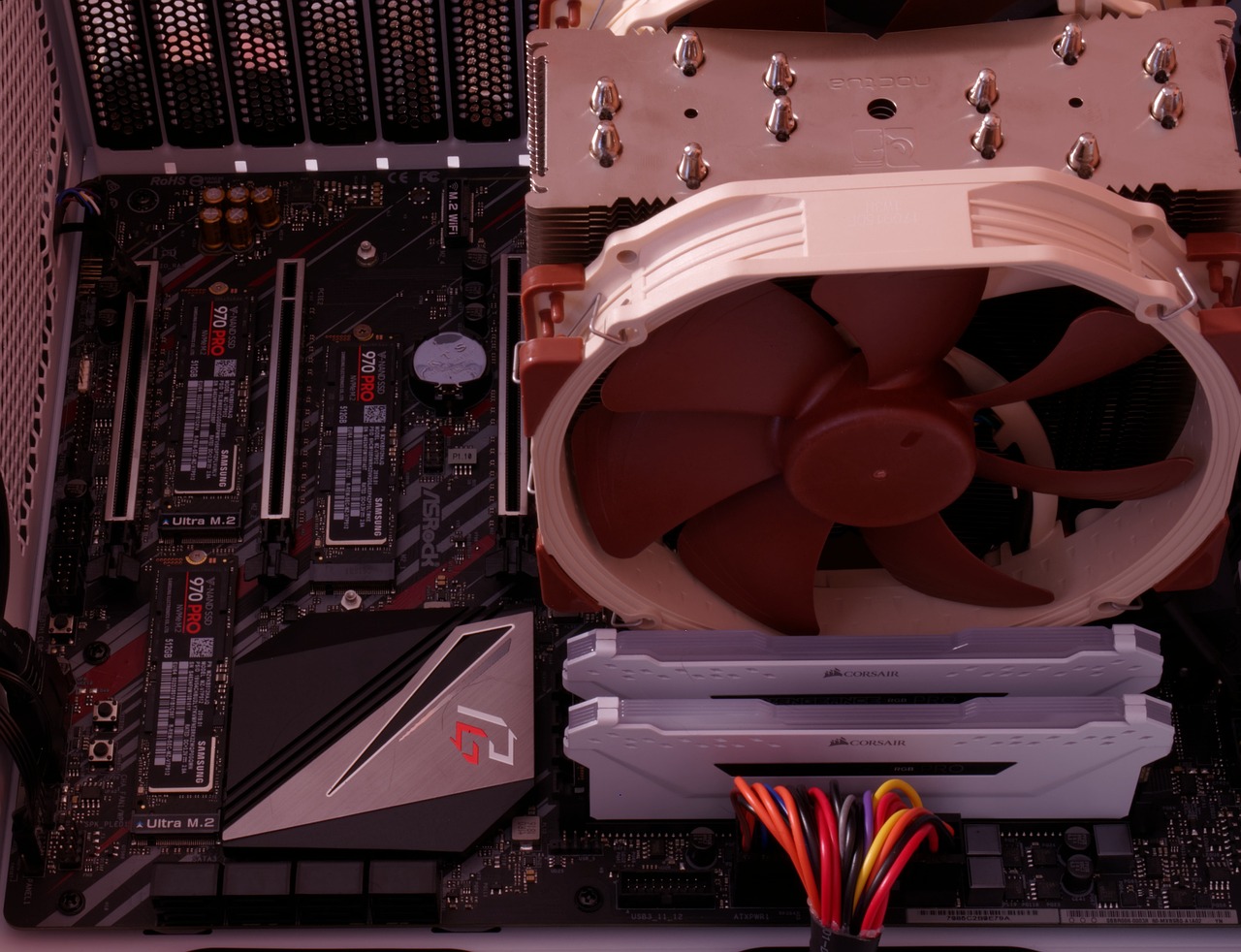
Future Trends and Predictions
As we look ahead, the integration of AI and blockchain technologies is set to reshape industries in ways we can only begin to imagine. One of the most exciting trends on the horizon is the increased interoperability between various platforms. This means that different AI and blockchain systems will be able to communicate and collaborate more effectively. Imagine a world where financial institutions, healthcare providers, and supply chain managers can seamlessly share data while maintaining security and privacy. This enhanced collaboration will not only streamline operations but also foster innovation across sectors.
Moreover, we can expect to see significant regulatory developments in the coming years. As AI and blockchain technologies evolve, governments and regulatory bodies will likely establish frameworks to govern their use. These regulations will aim to address ethical concerns, such as data privacy and algorithmic bias, while still promoting innovation. For instance, we might witness the emergence of guidelines that ensure transparency in AI decision-making processes on blockchain networks. This balance between regulation and innovation is crucial, as it will help build trust among consumers and businesses alike.
Another trend to watch is the rise of decentralized AI models. These models leverage blockchain technology to enhance data privacy and security while enabling collaborative machine learning. By allowing multiple parties to contribute to AI training without exposing sensitive information, decentralized AI can revolutionize industries such as healthcare and finance. Imagine a scenario where hospitals collaborate on patient data analysis without compromising individual privacy, leading to better treatment outcomes and more efficient healthcare delivery.
In addition, the focus on sustainability is likely to grow as AI and blockchain technologies become more intertwined. Companies will increasingly seek ways to utilize these technologies to promote eco-friendly practices. For example, blockchain can provide transparent tracking of supply chains, ensuring that products are sourced sustainably, while AI can optimize resource usage and reduce waste. This alignment of technology with sustainability goals could lead to a more responsible approach to business and environmental stewardship.
Lastly, as we delve deeper into the future, we may see the emergence of new applications that we haven't even thought of yet. Innovations in AI and blockchain are happening at a rapid pace, and the potential for breakthroughs is limitless. From enhancing smart cities to revolutionizing education through personalized learning experiences, the possibilities are endless. The convergence of these technologies could lead to solutions for some of the world's most pressing challenges, such as climate change, poverty, and global health crises.
- What are the main benefits of integrating AI and blockchain? The integration of AI and blockchain enhances security, transparency, and efficiency across various sectors, leading to improved decision-making and operational effectiveness.
- How can decentralized AI models improve data privacy? Decentralized AI models allow for collaborative machine learning without exposing sensitive data, ensuring that personal information remains secure while still being used for analysis.
- What role will regulations play in the future of AI and blockchain? Regulatory frameworks will likely emerge to address ethical concerns, ensure consumer protection, and foster innovation in the use of AI and blockchain technologies.

Increased Interoperability
The future of technology lies in its ability to communicate and work seamlessly with one another, and this is especially true for the integration of artificial intelligence (AI) and blockchain. As we look ahead, one of the most exciting trends is the between these two groundbreaking technologies. Imagine a world where AI can effortlessly access and analyze data stored on blockchain networks, leading to enhanced decision-making and more efficient processes across various sectors.
Interoperability refers to the capability of different systems to communicate and work together. For AI and blockchain, this means creating frameworks that allow for easy data exchange and functionality across different platforms. The implications of this are profound. For instance, in the financial sector, imagine an AI system that can pull real-time data from multiple blockchain networks to assess market conditions and make investment recommendations. This level of integration not only boosts efficiency but also enhances the accuracy of AI predictions.
Moreover, the push for interoperability is driven by several factors:
- Enhanced Collaboration: As industries become more interconnected, the need for systems to work together is paramount. Interoperability facilitates collaboration among businesses, allowing them to share insights and resources more effectively.
- Improved User Experience: When AI systems can access data from various blockchains, users benefit from a more cohesive experience. For example, a healthcare provider could access patient records from multiple blockchain databases, leading to better treatment outcomes.
- Streamlined Processes: Interoperability can significantly reduce redundancies and streamline processes. By enabling AI to interact with blockchain, organizations can automate workflows, reduce manual errors, and ultimately save time and money.
However, achieving this increased interoperability is not without its challenges. There are technical hurdles to overcome, such as developing standardized protocols that allow different blockchain networks to communicate. Additionally, there are concerns regarding data security and privacy. As we connect more systems, the risk of data breaches may increase, necessitating robust security measures.
In conclusion, the journey towards increased interoperability between AI and blockchain is just beginning. As we continue to innovate and refine these technologies, the potential for transformative change across various industries is immense. This synergy could lead to smarter cities, more efficient supply chains, and even advancements in healthcare that we can only dream of today. The future is bright, and the possibilities are endless.
- What is interoperability in the context of AI and blockchain?
Interoperability refers to the ability of different systems, such as AI and blockchain, to communicate and work together effectively, allowing for improved data exchange and functionality. - Why is increased interoperability important?
Increased interoperability enhances collaboration, improves user experience, and streamlines processes, leading to greater efficiency and accuracy across various sectors. - What challenges exist in achieving interoperability?
Challenges include technical hurdles related to standardized protocols, as well as concerns regarding data security and privacy as more systems become interconnected.
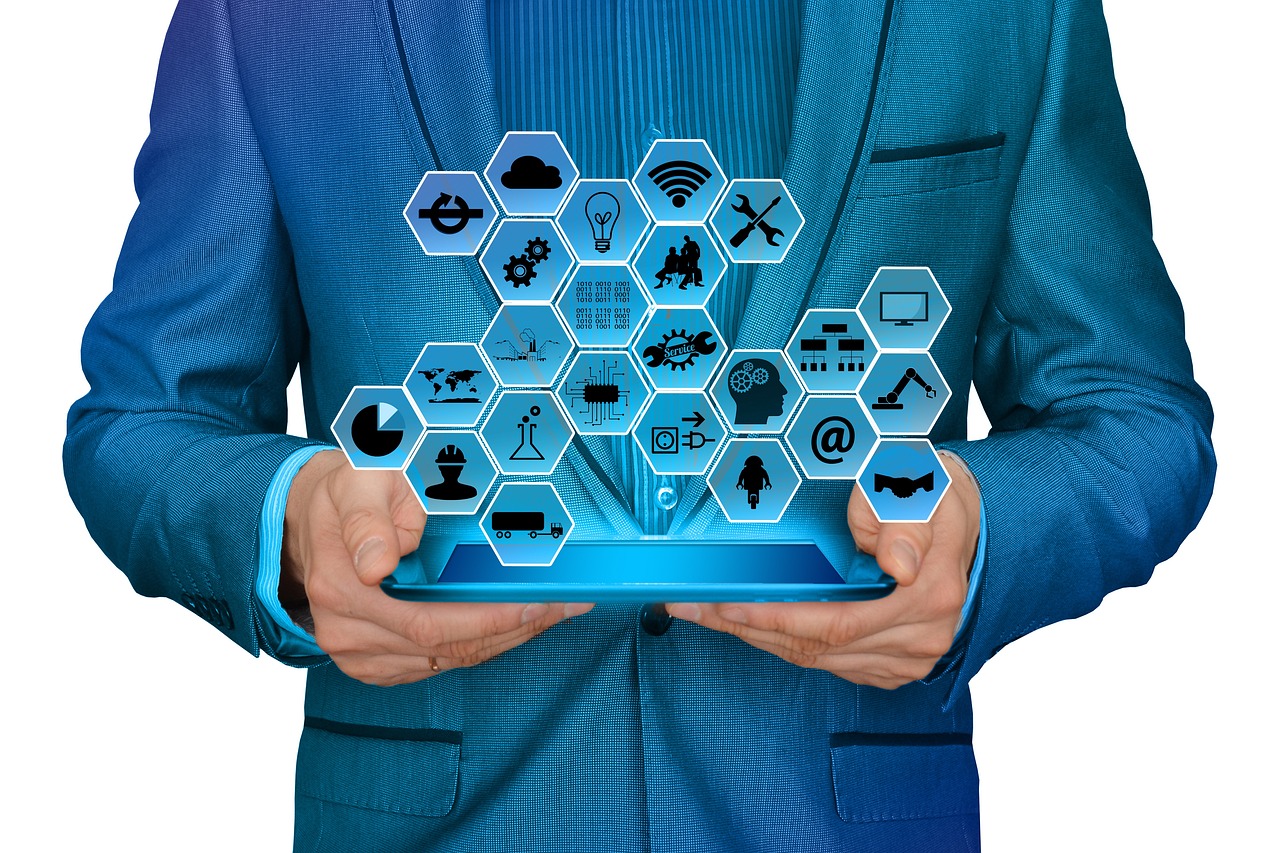
Regulatory Developments
As the integration of AI and blockchain technologies continues to gain momentum, the need for robust regulatory frameworks becomes increasingly evident. These frameworks are essential not only for fostering innovation but also for ensuring consumer protection and addressing ethical concerns. The rapid pace of technological advancements often outstrips current regulations, leading to a landscape where businesses and consumers alike may find themselves navigating a complex web of legal and ethical implications.
One of the primary challenges regulators face is the balance between encouraging innovation and protecting the public interest. For instance, while blockchain offers unprecedented transparency and security, it also raises questions about data privacy and ownership. Similarly, AI systems can provide significant benefits in decision-making processes, but they can also perpetuate biases if not carefully monitored. Therefore, regulatory bodies must develop guidelines that address these issues without stifling the creativity and potential of new technologies.
Moreover, we can expect to see a more collaborative approach to regulation, with stakeholders from various sectors, including technology, finance, and healthcare, coming together to create comprehensive policies. This collaboration could take the form of public-private partnerships, where industry leaders work alongside government officials to draft regulations that are both practical and effective. For example, a table outlining potential regulatory areas could look like this:
| Regulatory Area | Description |
|---|---|
| Data Privacy | Ensuring that personal information is securely stored and accessed, with clear guidelines on consent and usage. |
| Algorithmic Accountability | Establishing standards for transparency in AI decision-making processes to prevent bias and discrimination. |
| Interoperability Standards | Creating guidelines to facilitate the seamless integration of AI and blockchain technologies across different platforms. |
In addition, regulatory developments will likely include the establishment of specific regulatory bodies dedicated to overseeing AI and blockchain technologies. These bodies would be tasked with monitoring compliance, conducting audits, and enforcing regulations to ensure that both consumers and businesses operate within a safe and equitable framework. The emergence of such entities could lead to a more standardized approach to regulation, which would be beneficial for all stakeholders involved.
As we look toward the future, it is crucial that regulatory frameworks remain adaptable. The landscape of AI and blockchain is ever-changing, and regulations that are too rigid may become obsolete. Therefore, ongoing dialogue between regulators, technologists, and the public will be vital in shaping policies that not only protect consumers but also encourage the responsible advancement of these transformative technologies.
- What role do regulations play in the development of AI and blockchain?
Regulations help ensure that innovations are safe, ethical, and beneficial for society, while also protecting consumer rights. - How can stakeholders influence regulatory developments?
Through public-private partnerships and advocacy, stakeholders can collaborate with regulators to create effective policies. - What challenges do regulators face in overseeing AI and blockchain?
Balancing innovation with consumer protection, addressing data privacy concerns, and ensuring algorithmic accountability are key challenges.
Frequently Asked Questions
- What are the key benefits of combining AI and blockchain technologies?
The integration of AI and blockchain offers numerous advantages, such as enhanced security, improved efficiency, and greater transparency. By leveraging blockchain's decentralized nature, AI can access and analyze vast amounts of data securely, leading to better decision-making and innovative solutions across various sectors.
- How is AI used in financial applications with blockchain?
In the financial sector, AI is utilized for smart contracts, fraud detection, and risk assessment. Smart contracts can be optimized by AI to automate processes and predict outcomes. Additionally, AI algorithms analyze transaction patterns to identify fraudulent activities, while also providing accurate risk assessments for lending and investment decisions.
- Can you explain how AI and blockchain improve healthcare?
AI and blockchain enhance healthcare by ensuring secure patient data management and improving diagnostics. Blockchain technology protects sensitive patient information, while AI analyzes this data to offer personalized treatment recommendations. Furthermore, integrating these technologies can enhance drug supply chain management, ensuring authenticity and reducing counterfeit products.
- What challenges arise from the integration of AI and blockchain?
Despite their potential, the combination of AI and blockchain presents challenges, particularly regarding data privacy and algorithmic bias. Ensuring that personal information is stored and accessed securely is crucial. Additionally, AI systems must be designed to avoid perpetuating biases, maintaining fairness and transparency in decision-making processes.
- What future trends can we expect in AI and blockchain integration?
Looking ahead, we anticipate increased interoperability between AI and blockchain platforms, enhancing collaboration across industries. Additionally, new regulatory frameworks are likely to emerge, addressing ethical concerns while encouraging innovation and protecting consumers in this rapidly evolving technological landscape.



